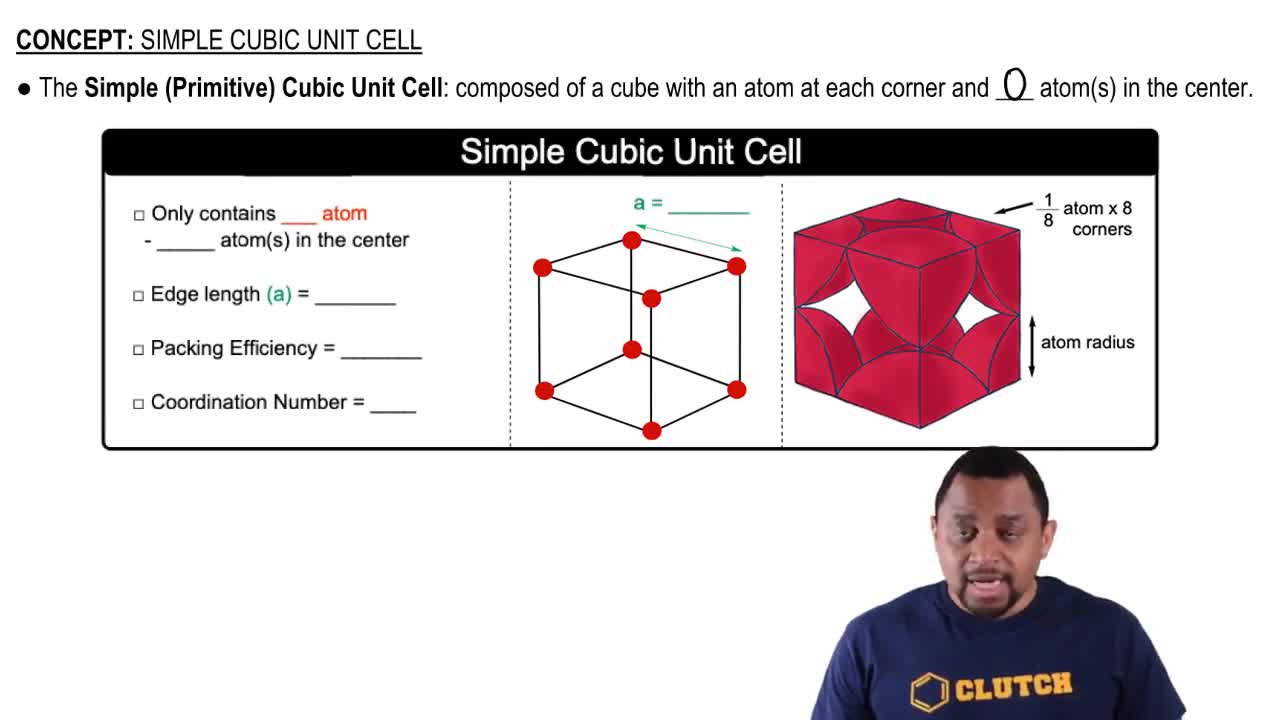The mineral wustite is a nonstoichiometric iron oxide with the empirical formula FexO, where x is a number slightly less than 1. Wustite can be regarded as an FeO in which some of the Fe sites are vacant. It has a density of 5.75 g>cm3, a cubic unit cell with an edge length of 431 pm, and a facecentered cubic arrangement of oxygen atoms. (d) Using X rays with a wavelength of 70.93 pm, at what angle would third-order diffraction be observed from the planes of atoms that coincide with the faces of the unit cells? Third-order diffraction means that the value of n in the Bragg equation is equal to 3.
 Verified step by step guidance
Verified step by step guidance
Verified Solution
Key Concepts
Bragg's Law

Nonstoichiometric Compounds

Cubic Unit Cell

The mineral wustite is a nonstoichiometric iron oxide with the empirical formula FexO, where x is a number slightly less than 1. Wustite can be regarded as an FeO in which some of the Fe sites are vacant. It has a density of 5.75 g>cm3, a cubic unit cell with an edge length of 431 pm, and a facecentered cubic arrangement of oxygen atoms. (c) Each Fe atom in wustite is in either the +2 or the +3 oxidation state. What percent of the Fe atoms are in the +3 oxidation state?
Small molecules with C=C double bonds, called monomers, can join with one another to form long chain molecules called polymers. Thus, acrylonitrile, H2C=CHCN, polymerizes under appropriate conditions to give polyacrylonitrile, a common starting material for producing the carbon fibers used in composites. (a) Write electron-dot structures for acrylonitrile and polyacrylonitrile, and show how rearranging the electrons can lead to formation of the polymer.
Small molecules with C'C double bonds, called monomers, can join with one another to form long chain molecules called polymers. Thus, acrylonitrile, H2C'CHCN, polymerizes under appropriate conditions to give polyacrylonitrile, a common starting material for producing the carbon fibers used in composites. (b) Use the bond dissociation energies in Table 7.1 to calculate ΔH per H2C'CHCN unit for the conversion of acrylonitrile to polyacrylonitrile. Is the reaction endothermic or exothermic?
